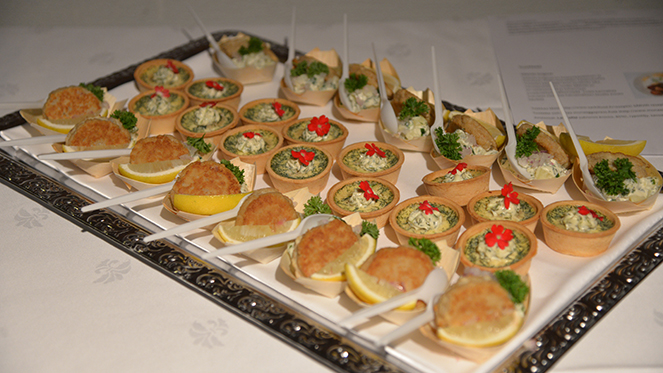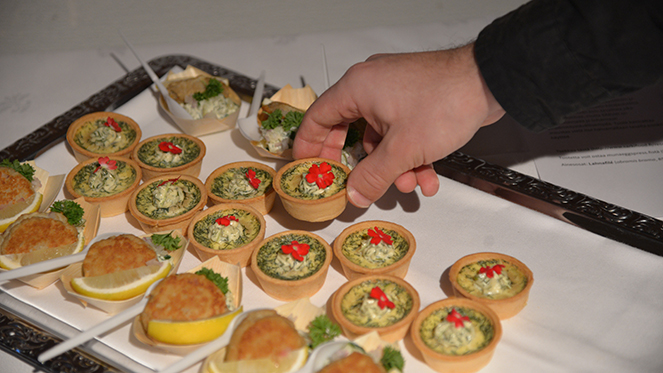Roach and other cyprinid fish are an unexploited treasure in Finnish waters

Finland has a great deal of potential when it comes to increasing the sustainable use of fish. Up to 50 million kilogrammes of undervalued fish, such as roach and bream, could be caught sustainably each year. In recent years, food products made from traditionally underappreciated fish have begun to conquer the market. Now, research has identified new opportunities to turn these untapped resources into value-added products.
The demand for sustainable and fish-based products is on the rise and the market is rapidly growing. Although we have our own supply of high-quality fish resources, the majority of fish gelatine used in Finland is actually imported from abroad. Roach scales and fish caught as bycatch, particularly bream, are promising sources of Finnish fish gelatine.
Cold food products, superfoods and biodegradable films
As such, fish gelatine is best suited for cold food products, but it can also be modified for use in a wide variety of applications. Gelatine can be refined into biodegradable films and gels that can be used as an active coating for foodstuffs and packaging materials, as well as for capsules.
“Films made from roach scales have proven to be very durable. Gels are also a high-quality source of protein that can be used to modify the structure of foods. Gelatine is generally produced from collagen, which can be used in cosmetics and food supplements,” says Sari Mäkinen, Research Manager at the Natural Resources Institute Finland.
Full utilisation of fish catch mitigates eutrophication
While shedding light on promising research findings, Mäkinen also emphasises the multiple benefits of improving the utilisation of cyprinid fish. For example, increasing the volume of cyprinid fishing can help mitigate eutrophication, as removing the fish also removes excess nutrients.
“The profitability of fishing would also increase, as there would be a lucrative use for bycatch. I am absolutely in favour of increasing the utilisation of Finnish fish as a raw material. Although the price per kilogramme would not be able to compete with that of traditional minced meat, for example, the environmental and health aspects would play an important role in consumers’ purchase decisions,” Mäkinen says with determination.
Studies reveal roach roe to be loaded with nutrients
According to studies, cyprinids are an excellent source of protein and vitamin D. This means that Finnish roach could make a great replacement for beef, pork and broiler chicken. Such a change in consumption behaviour would be a boon to both the environment and public health. In studies of roe from different species, roach roe was found to have several features that distinguish it from the rest.
“Roach roe has as much protein as red meat, around the same amount of cholesterol as an egg, and a significant amount of unsaturated fatty acids. Additionally, its concentrations of harmful substances are well below the threshold values,” says Mäkinen, describing the high value hidden within the traditionally underappreciated species.
The possibilities for developing cyprinids into specialised products with a high added value are wide-ranging. Roach roe and fish gelatine can be combined to create visually appealing and very nutritious gourmet foods. Roe is just one of the many opportunities roach has to offer.
Seeking commercial operators to develop industrial processes
The market for products made from wild Finnish fish is rapidly growing. The European Maritime and Fisheries Fund is investing in work to increase the value of underutilised fish resources. The Blue Projects fishing innovation programme creates growth for fishing industry operators by developing processes and products suitable for underutilised fish and side streams.
The Ministry of Agriculture and Forestry has decided to invest in long-term development work seeking solutions for utilising fish catches in new ways and increasing their value in cooperation with research institutes and businesses.
“Fish products have a negative trade balance of around EUR 350 in Finland. For this reason, it is very important to increase the value added of Finnish fish catches. New utilisations of fish catches, particularly cyprinids and Finland’s substantial Baltic herring catch, present a great deal of potential,” says Timo Halonen, Ministerial Adviser at the Ministry of Agriculture and Forestry.
Prior to beginning its research on the properties of cyprinids, the Natural Resources Institute conducted a wide survey to determine the interest of various fields in creating products with high added value. Many industries expressed interest in the hidden potential of fish, from cosmetics to foodstuffs to the pet food industry. The next phase of the project will be a pilot to scale the gelatine production process up for industrial applications. Based on the results, the researchers can move forward in their yield and profitability calculations and product development. With this in mind, Mäkinen encourages interested companies to be in contact to discuss product development needs.
Inquiries:
Sari Mäkinen, Research Scientist, Natural Resources Institute Finalnd, tel. 0295326378, firstname.lastname@luke.fi
Timo Halonen, Ministerial Adviser, Ministry of Agriculture and Forestry, tel. +358 295 162 411, firstname.lastname@mmm.fi

|
| When it comes to exploring product applications, imagination is the only limit. Roach can be used to produce delicious minced meat, for example. |



